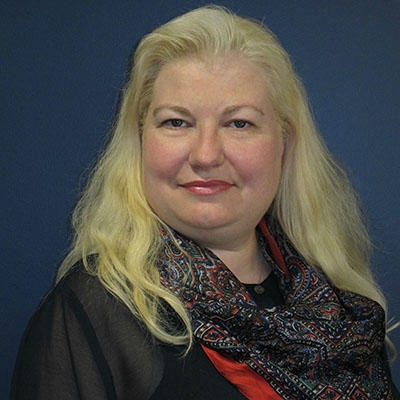Dr. Michael Brent, a retina specialist at Toronto Western Hospital and the lead for the Diabetes Action Canada Diabetic Retinopathy Screening Program, says having community health centres perform the outreach takes the burden off busy family practitioners, while ensuring that the work is done by healthcare workers that patients can trust. (Photo: The Globe and Mail)
With diabetic retinopathy currently a leading cause of blindness in working-age Canadians, the need to do more is clear. This vision loss is often preventable with early detection and treatment.
Even before the pandemic created a greater gap in services, 40 per cent of people living with diabetes in Ontario had not had an eye exam for more than two years. Many of those people are from low-income communities.
This gap is the reason Diabetes Action Canada researchers have developed Project OPEN. It uses medical records data to identify people who haven’t been screened, then community health reaches out to offer screening.
Project OPEN is led by Dr. Michael Brent, a retina specialist at Toronto Western Hospital and the lead for the Diabetes Action Canada Diabetic Retinopathy Screening Program, and Dr. Valeria Rac, a scientist at the Toronto General Hospital Research Institute (TGHRI), who leads the Health Technology Assessment and Network Analytics Program.
“The patients loved it,” Dr. Brent says of the pilot project at Toronto’s Women’s College Hospital that validated the study idea. “If you invite them, they will come.”
Project OPEN uses community health centres – currently 13 in the Toronto area with plans to expand to more than 70 across the province – to perform the outreach and arrange screenings. Based on its initial success, the team has applied for funding to bring the program to other provinces, including Alberta, British Columbia and Newfoundland, hoping to bring this UHN-led project to a national stage.
A Diabetic Retinopathy Screening Program with mobile imaging equipment has been developed to target areas with low screening rates. Images of the retina and health data collected are uploaded to a secure server at Ontario Health. Images and data are graded remotely by retinopathy specialists and care recommendations provided back to the primary care provider.

Project OPEN is a unique opportunity to use administrative data in a way that puts those living with diabetes at the forefront. It is, Dr. Rac explains, using data that already exists to improve clinical care.
Data from the Institute for Clinical Evaluative Studies (ICES) will be used to identify people who have not been screened. Then, using electronic medical records, individuals will be invited to the participating community health centres for an eye exam.
Having community health centres perform the outreach takes the burden off busy family practitioners, while ensuring that the work is done by healthcare workers that patients can trust.
“They have really good primary care teams at the community health centres and they have good interactions with their patient population,” says Dr. Brent. “If they’re able to reach out to people living with diabetes we’re really hopeful that this will boost screening uptake for vulnerable populations.”
The program has a particular focus on new immigrants, young people and those from low-income or marginalized communities, who may not realize that they are eligible to receive this service. Many, Dr. Rac explains, would not even show up in electronic medical records if it were not for the participation of the community health centres. These are often the only places vulnerable populations will seek treatment.
Working with a Diabetes Action Canada Patient Partner, Debbie Sissmore, who lost her vision due to diabetic retinopathy, was a huge help in developing the program. Both Debbie and her husband, Malcolm, were involved in the project from the initial conception in order to ensure input from those who are living with this particular complication.
First use of Ontario digital health assets to enable population health management
“Debbie and Malcolm, as an example, provided input on the interview guide that we will use to interview patients about their experience with the screening that is currently ongoing in different community health centers,” says Dr. Rac, explaining how the duo have helped to create resources that will work well not only for health care providers, but also for those living with diabetes.
Currently, there is a disconnect with tracking eye exams. Electronic medical records don’t identify if someone has been screened and there is not a standard system to connect patients with eye care.
Family doctors will suggest an eye check and may even provide information on local clinics, but they don’t have a method to follow-up or find out if the patient attended and what the outcome of the exam was.
“Optometry is not required to send a letter back to primary care to complete the loop, so without the provincial health care data we really don’t know [if someone has been screened],” says Dr. Brent.
Project OPEN will be the first use of provincial digital health assets to enable population health management in Ontario.
“It will allow patients to engage in their own health care, especially vulnerable populations, and it will build capacity for diabetic retinopathy screening through digital media and teleophthalmology,” Dr. Brent explains. “If we are able to identify diabetic retinopathy early enough, we can prevent vision loss and blindness, so screening programs are really important.”
This work was supported in part by UHN Foundation donors.



